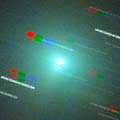
|
It brightened more rapidly than expected, and reached to 7.2 mag on July 14 (Maik Meyer). It will be fading gradually after this. It kept observable in good condition for a while in the Northern Hemisphere. However, it moves southwards very fast in August. It is only observable until mid August in the Northern Hemisphere. On the other hand, it became observable since mid July in the Southern Hemisphere.
Date(TT) R.A. (2000) Decl. Delta r Elong. m1 Best Time(A, h)
July 28 13 24.15 16 45.5 0.763 1.042 70 7.7 18:42 (150, 34)
Aug. 4 13 7.55 5 28.0 0.940 1.022 62 8.0 18:46 (131, 37)
|
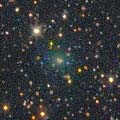
|
It became brighter than expected, and reached to 13.2 mag (May 12, Carlos Labordena). However, it is already not observable. In the Southen Hemisphere, it will be observable again at 15 mag in November. But in the Northern Hemisphere, it will never observable again.
Date(TT) R.A. (2000) Decl. Delta r Elong. m1 Best Time(A, h)
July 28 9 23.46 11 30.2 2.764 1.806 15 13.1 18:42 (102, -3)
Aug. 4 9 39.58 8 48.9 2.780 1.812 13 13.1 18:46 ( 98, -4)
|
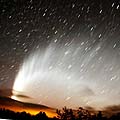
|
Excellent great comet, few times in a lifetime, for southern people. It reached to -5.5 mag on Jan. 14 and 15, brighter than Venus, and visible even in daytime. Then it appeared in the evening sky in the Southern Hemisphere and many people enjoyed a fantastic view of a beautiful great comet, a enormous curving tail with so many striae over 50 degrees. Now it is observable both in the evening and morning. It has already faded down to 12.6 mag (July 6, Walter Ruben Robledo). In the Southern Hemisphere, It keeps observable almost all night until the comet has gone. It will never be observable again in the Northern Hemisphere.
Date(TT) R.A. (2000) Decl. Delta r Elong. m1 Best Time(A, h)
July 28 12 50.81 -66 53.2 3.255 3.552 98 13.8 18:42 ( 21, 53)
Aug. 4 13 4.74 -65 32.2 3.405 3.640 95 14.1 18:46 ( 24, 52)
|
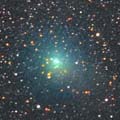
|
It passed near by the earth in mid April, and reached to 7.6 mag (Apr. 18, Juan Jose Gonzalez). It locates high in the evening sky, and it is observable in good condition. But it already faded down to 11.4 mag visually (June 18, Carlos Labordena), and 14.1 mag by CCD (June 23, Ken-ichi Kadota). It keeps observable in good condition in the Northern Hemisphere until the comet has gone.
Date(TT) R.A. (2000) Decl. Delta r Elong. m1 Best Time(A, h)
July 28 13 24.02 57 15.7 2.366 2.153 65 13.9 18:42 (167, -5)
Aug. 4 13 30.08 56 32.8 2.486 2.235 63 14.2 18:46 (163, -5)
|

|
It had been bright as 12-13 mag and visible visually almost always from 2006 July to 2007 April. Although it has been unobservable for a long time, now it is appearing in the morning sky finally.
Date(TT) R.A. (2000) Decl. Delta r Elong. m1 Best Time(A, h)
July 28 5 49.45 29 52.8 6.709 5.932 37 13.9 5:30 (229, 4)
Aug. 4 5 54.98 29 55.3 6.641 5.934 42 13.9 5:25 (226, 7)
|
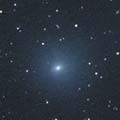
|
It passed near by the earth in early April, and reached to 8.7 mag (Apr. 10, Werner hasubick). Then it faded down to 11.8 mag on May 26 (Seiichi Yoshida), and became too low to observe in the evening. Now it is not observable. Although it has been unobservable for a long time, now it is appearing in the morning sky finally.
Date(TT) R.A. (2000) Decl. Delta r Elong. m1 Best Time(A, h)
July 28 7 9.20 25 35.5 2.528 1.603 19 14.0 5:30 (243, -7)
Aug. 4 7 7.41 25 54.1 2.513 1.664 26 14.3 5:25 (240, -2)
|
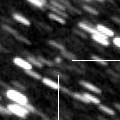
|
Now it is 15.4 mag (June 12, Ken-ichi Kadota). It will reach to 14.5 mag in summer. It moves in the southen sky, and it is observable in good condition in the Southern Hemisphere. However, it will never be observable again in the Northern Hemisphere.
Date(TT) R.A. (2000) Decl. Delta r Elong. m1 Best Time(A, h)
July 28 18 54.33 -53 57.8 2.555 3.404 140 14.4 22:29 ( 0, 71)
Aug. 4 18 32.71 -55 20.5 2.601 3.381 133 14.4 21:40 ( 0, 70)
|
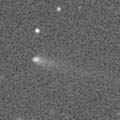
|
Now it is bright and visible visually at 13.8 mag (July 21, Bob King). It will be observable in very good condition at 14 mag from summer to autumn. However, it was not discovered at the previous apparition in 1999. So it may be bright temporarily in outburst.
Date(TT) R.A. (2000) Decl. Delta r Elong. m1 Best Time(A, h)
July 28 0 13.69 -3 34.4 1.572 2.286 122 14.6 3:53 (180, 59)
Aug. 4 0 17.41 -4 8.7 1.508 2.283 128 14.5 3:29 (180, 59)
|

|
It will reach to 11 mag in 2008 spring. It will keep bright for a long time, however, it keeps moving in the southern sky for a while after this. In the Southern Hemisphere, now it is low temporarily. But it will be high after this, then it keeps observable in good condition until 2008 summer. In the Northern Hemisphere, it will appear at 13 mag in November in a short time, but very low and hard to observe. However, it will be visible visually at 11 mag in the evening sky from March to June in 2008. Then it becomes unobservable again. But it will appear in the morning sky again at 13 mag at the end of 2008, then it keeps bright and observable for a while.
Date(TT) R.A. (2000) Decl. Delta r Elong. m1 Best Time(A, h)
July 28 7 10.00 -27 8.9 4.940 4.356 49 14.7 5:30 (288, 23)
Aug. 4 7 19.39 -27 37.5 4.879 4.307 50 14.6 5:25 (287, 26)
|
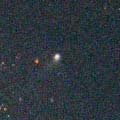
|
Now it is bright and visible visually at 13.2 mag (July 14, Juan Jose Gonzalez). It will be observable at 14 mag at high location from spring to summer both in 2007 and 2008.
Date(TT) R.A. (2000) Decl. Delta r Elong. m1 Best Time(A, h)
July 28 17 14.83 -1 43.7 5.027 5.731 129 14.7 20:51 (180, 57)
Aug. 4 17 8.84 -1 31.6 5.112 5.720 122 14.7 20:18 (180, 57)
|
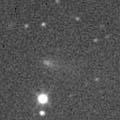
|
Now it is bright as 14.5 mag (July 16, Michael Jager). It will keep bright as 14-15 mag and observable in good condition for a long time until autumn.
Date(TT) R.A. (2000) Decl. Delta r Elong. m1 Best Time(A, h)
July 28 2 52.47 32 55.1 2.191 2.157 74 14.9 5:30 (194, 21)
Aug. 4 3 3.89 34 40.9 2.139 2.174 78 15.0 5:25 (191, 19)
|
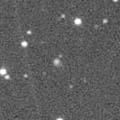
|
It will reach to 10.5 mag and will be observable in good condition in 2008 autumn. Now it is 15.0 mag (July 15, Michael Jager), brightening as expected. It keeps observable in good condition for a long time while the comet is getting brighter slowly.
Date(TT) R.A. (2000) Decl. Delta r Elong. m1 Best Time(A, h)
July 28 21 56.51 -8 49.5 3.919 4.864 156 15.1 1:37 (180, 64)
Aug. 4 21 52.50 -8 42.2 3.829 4.810 163 15.0 1:05 (180, 64)
|
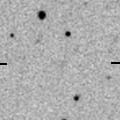
|
It was 17.5 mag on June 17 (Michael Jager). Now it must be brightening up to 15.5 mag. However, because it has been locating very low, few observations have been reported since June. It will approach down to 0.4 A.U. to the sun on Oct. 28, and it is expected to reach to 6 mag. However, the condition in the Northern Hemisphere is very hard. It will be unobservable soon. After conjunction with the sun, the comet will be brighter than 11 mag in late September, and will be 8 mag in mid October. But it locates extremely low, slightly over the horizon in the morning sky. It goes to the southern sky in late October, then it will never be observable again. In the Southern Hemisphere, it will appear in the evening sky at 7 mag in early November. Then it keeps observable while fading gradually, although it will not locate very high.
Date(TT) R.A. (2000) Decl. Delta r Elong. m1 Best Time(A, h)
July 28 10 22.87 28 31.2 2.768 1.931 27 15.6 18:42 (124, -2)
Aug. 4 10 28.86 28 25.1 2.697 1.821 24 15.3 18:46 (120, -6)
|
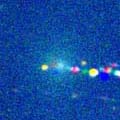
|
In the Southern Hemisphere, it is observable in the evening sky until early August while the comet is fading gradually down to 16 mag. In the Northern Hemisphere, it is not observable until when the comet becomes fainter than 18 mag. It was not discovered in last autumn when the comet located in the good condition, so it may fade out rapidly after this. CCD observers reported the comet extremely faint, fainter than 18 mag, after mid June.
Date(TT) R.A. (2000) Decl. Delta r Elong. m1 Best Time(A, h)
July 28 10 6.76 -10 9.5 2.430 1.749 38 15.4 18:42 ( 91, 19)
Aug. 4 10 25.81 -9 49.5 2.554 1.824 35 15.6 18:46 ( 89, 16)
|
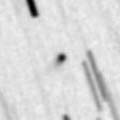
|
It passed very close to the earth in July and reach to 15.5 mag (July 16, Michael Jager). But it will fade out rapidly after August, and will be fainter than 18 mag in September.
Date(TT) R.A. (2000) Decl. Delta r Elong. m1 Best Time(A, h)
July 28 17 41.59 9 21.9 0.225 1.174 130 15.5 21:20 (180, 45)
Aug. 4 18 1.23 17 48.1 0.255 1.179 124 15.7 21:12 (180, 37)
|
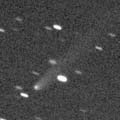
|
It has been visible at 13.5 mag for a long time since 2005 autumn until 2006 spring. However, it has already faded down to 16.7 mag (June 23, Ken-ichi Kadota). Fine tail is visible on CCD images. It is getting lower gradually, and will be too low to observe in September.
Date(TT) R.A. (2000) Decl. Delta r Elong. m1 Best Time(A, h)
July 28 12 49.20 14 4.4 6.670 6.268 62 15.8 18:42 (141, 31)
Aug. 4 12 52.37 13 13.7 6.787 6.297 57 15.8 18:46 (134, 28)
|
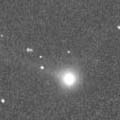
|
It had been observed while brightening rapidly until the perihelion passage on Apr. 19, although it located extremely low in the evening sky. It reached to 6.7 mag on Apr. 17 (Juan Jose Gonzalez). In the Southern Hemisphere, it appeared in the morning sky at 7.8 mag in early May (May 9, Alexandre Amorim). Then it is fading rapidly, and it has faded down to 10.9 mag on May 27 (Ken-ichi Kadota). Now it must be fainter than 15 mag. It will not be higher than now in the Northern Hemisphere after this, and it will fade out rapidly.
Date(TT) R.A. (2000) Decl. Delta r Elong. m1 Best Time(A, h)
July 28 20 16.69 -34 40.7 0.798 1.797 164 15.8 23:51 (180, 90)
Aug. 4 19 56.93 -33 55.9 0.895 1.878 159 16.0 23:04 (180, 89)
|

|
Appearing in the morning sky after long time blank since last winter. It must be already bright as 16 mag. It will reach to 14 mag in next winter, and will be observable in good condition. It is expected to be visible visually. It keeps observable in good condition for a long time until 2008 spring.
Date(TT) R.A. (2000) Decl. Delta r Elong. m1 Best Time(A, h)
July 28 5 6.91 28 4.1 3.584 2.977 46 16.0 5:30 (223, 12)
Aug. 4 5 19.79 28 10.2 3.488 2.944 50 15.9 5:25 (221, 13)
|
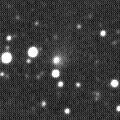
|
Now it is 16.5 mag (Apr. 9, Ken-ichi Kadota). No observations have been reported since June. However, the fading is slow. The comet will be fainter than 18 mag in 2008. In the Northern Hemisphere, it keeps observable until that time.
Date(TT) R.A. (2000) Decl. Delta r Elong. m1 Best Time(A, h)
July 28 5 43.68 64 31.9 4.001 3.484 52 15.9 5:30 (203,-19)
Aug. 4 5 49.94 64 32.1 4.004 3.544 56 16.0 5:25 (202,-18)
|
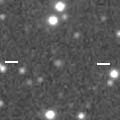
|
Now it is 17.2 mag (June 20, Ken-ichi Kadota). It will reach to 12 mag in 2008 summer. In the Northern Hemisphere, it keeps observable almost all time until that while the comet is brightening gradually. However, it goes to the southern sky and will never be observable again in the Northern Hemisphere after that.
Date(TT) R.A. (2000) Decl. Delta r Elong. m1 Best Time(A, h)
July 28 16 44.67 29 42.9 4.943 5.337 107 16.2 20:21 (180, 25)
Aug. 4 16 40.79 28 20.8 4.955 5.285 103 16.2 19:50 (180, 27)
|

|
First return of a new periodic comet discovered in 1998 at 14 mag. It was recovered at 18 mag in May and June. It is a bit fainter than this ephemeris, but almost as bright as predicted. It will reach to 16 mag until autumn.
Date(TT) R.A. (2000) Decl. Delta r Elong. m1 Best Time(A, h)
July 28 0 27.12 -0 15.1 2.097 2.729 118 16.4 4:07 (180, 55)
Aug. 4 0 28.77 0 16.3 2.007 2.713 124 16.2 3:41 (180, 55)
|

|
Appearing in the moring sky. No observations have been reported since January. But it must have already brightened up to 16.5 mag. It will reach to 13.5 mag in the southern sky in 2008 spring and summer. In the Southern Hemisphere, it keeps observable for a long time after this. However, it is only observable until autumn in the Northern Hemisphere, when the comet brightens up to 15 mag. Then it will be observable again at the end of 2008, when the comet will already fade down to 15 mag.
Date(TT) R.A. (2000) Decl. Delta r Elong. m1 Best Time(A, h)
July 28 1 34.45 -13 30.8 3.675 4.083 106 16.4 5:14 (180, 68)
Aug. 4 1 36.05 -15 14.2 3.527 4.031 112 16.3 4:48 (180, 70)
|
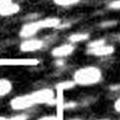
|
Now it is 16.8 mag (June 18, E. Guido, G. Sostero). It will be observable at 16.5 mag in summer and autumn in 2007, and observable at 17 mag in summer and autumn in 2008.
Date(TT) R.A. (2000) Decl. Delta r Elong. m1 Best Time(A, h)
July 28 17 19.79 -24 38.9 1.764 2.596 136 16.4 20:57 (180, 80)
Aug. 4 17 18.37 -24 19.0 1.802 2.568 129 16.4 20:28 (180, 79)
|
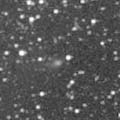
|
New bright comet. It is observable at 16-17 mag in 2007 summer. It will be observable brighter than 18 mag also in 2008, from spring to summer.
Date(TT) R.A. (2000) Decl. Delta r Elong. m1 Best Time(A, h)
July 28 18 15.26 -1 41.5 2.619 3.487 143 16.5 21:51 (180, 57)
Aug. 4 17 59.43 -2 42.3 2.692 3.481 134 16.6 21:08 (180, 58)
|
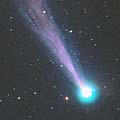
|
It reached up to 4 mag in 2006 autumn. But it had faded down to 10.5 mag on Jan. 11 (Carlos Labordena). It had been unobservable for a long time since that, but now it is appearing at dawn again. Now it is 16.8 mag (May 27, Ken-ichi Kadota), fading rather rapidly. After this, it keeps observable until it becomes fainter than 18 mag in autumn.
Date(TT) R.A. (2000) Decl. Delta r Elong. m1 Best Time(A, h)
July 28 22 30.89 -24 45.6 3.394 4.309 150 16.5 2:11 (180, 80)
Aug. 4 22 23.05 -26 11.2 3.427 4.383 157 16.6 1:36 (180, 81)
|
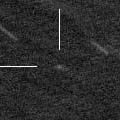
|
Now it is 17.2 mag (June 18, Tony Farkas). It will reach to 15 mag and will be observable in good condition in autumn. Then it keeps observable until it becomes fainter than 18 mag in 2008 spring.
Date(TT) R.A. (2000) Decl. Delta r Elong. m1 Best Time(A, h)
July 28 1 53.01 14 46.4 1.792 2.106 92 16.7 5:30 (181, 40)
Aug. 4 2 1.89 16 50.8 1.699 2.082 96 16.5 5:13 (180, 38)
|
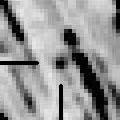
|
New bright comet. It will be fading gradually after this, and will be fainter than 18 mag in October. It must have been locating high at 16.5 mag since spring, but it was not discovered. So it may fade out rapidly after this.
Date(TT) R.A. (2000) Decl. Delta r Elong. m1 Best Time(A, h)
July 28 19 3.03 -19 27.0 1.945 2.921 160 16.6 22:39 (180, 75)
Aug. 4 19 1.43 -20 43.4 1.994 2.935 153 16.7 22:10 (180, 76)
|
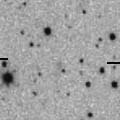
|
Now it is 17.1 mag (June 12, Ken-ichi Kadota). It will be observable at 16.5-17 mag in good condition in summer.
Date(TT) R.A. (2000) Decl. Delta r Elong. m1 Best Time(A, h)
July 28 20 4.44 17 6.6 5.005 5.850 143 16.7 23:40 (180, 38)
Aug. 4 19 57.01 17 24.1 5.014 5.851 142 16.7 23:05 (180, 38)
|
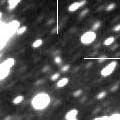
|
Now it is 17.5 mag (July 16, Michael Jager). It is outside of Jupiter's orbit. So it keeps 17 mag for a long time until 2007 summer. It keeps locating high and observable in good condition for a long time after this because it moves in the northern sky.
Date(TT) R.A. (2000) Decl. Delta r Elong. m1 Best Time(A, h)
July 28 2 54.56 36 52.6 4.014 3.848 73 17.1 5:30 (193, 17)
Aug. 4 2 59.79 36 43.8 3.941 3.872 78 17.1 5:25 (190, 17)
|

|
New periodic comet. It will reach to 16 mag in autumn, and will be observable in good condition.
Date(TT) R.A. (2000) Decl. Delta r Elong. m1 Best Time(A, h)
July 28 2 10.77 2 32.1 1.744 2.064 93 17.4 5:30 (188, 52)
Aug. 4 2 21.41 2 55.1 1.668 2.056 96 17.2 5:25 (183, 52)
|

|
Now it is 18.1 mag (Apr. 14, Maciej Reszelski). It is observable at 17.5-18 mag until autumn. It was discovered at 18 mag in 2006. It is a distant periodic comet, and it keeps observable at 18 mag for 4 years until 2009.
Date(TT) R.A. (2000) Decl. Delta r Elong. m1 Best Time(A, h)
July 28 18 47.93 -14 15.8 3.217 4.163 155 17.3 22:24 (180, 69)
Aug. 4 18 44.62 -14 49.9 3.260 4.161 148 17.4 21:53 (180, 70)
|
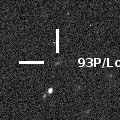
|
It was observed at 17.3 mag on July 15 (Vitali Nevski). It will brighten rapidly after this. It is observable at 13.5 mag in good condition from autumn to winter.
Date(TT) R.A. (2000) Decl. Delta r Elong. m1 Best Time(A, h)
July 28 0 45.07 7 21.8 1.629 2.210 111 17.9 4:24 (180, 48)
Aug. 4 0 50.50 8 49.9 1.523 2.169 116 17.5 4:02 (180, 46)
|
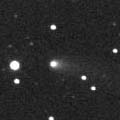
|
It reached to 13.5 mag and became visible visually in 2005 and 2006. Now it has gone far away. But it is observable at 17.5 mag until November.
Date(TT) R.A. (2000) Decl. Delta r Elong. m1 Best Time(A, h)
July 28 2 23.05 8 26.5 3.881 3.981 88 17.6 5:30 (191, 46)
Aug. 4 2 25.92 8 38.4 3.793 3.996 94 17.6 5:25 (184, 46)
|

|
Now it is 18.8 mag (July 26, Filip Fratev). It will reach to 17.5 mag until autumn.
Date(TT) R.A. (2000) Decl. Delta r Elong. m1 Best Time(A, h)
July 28 0 6.58 -5 9.2 2.299 2.997 124 18.0 3:46 (180, 60)
Aug. 4 0 7.58 -5 33.6 2.222 2.991 131 17.9 3:20 (180, 61)
|
|
![]()
 C/2005 L3 ( McNaught )
C/2005 L3 ( McNaught ) 17P/Holmes
17P/Holmes C/2006 OF2 ( Broughton )
C/2006 OF2 ( Broughton ) C/2007 F1 ( LONEOS )
C/2007 F1 ( LONEOS ) C/2007 K5 ( Lovejoy )
C/2007 K5 ( Lovejoy ) 189P/2007 N2 ( NEAT )
189P/2007 N2 ( NEAT ) C/2003 WT42 ( LINEAR )
C/2003 WT42 ( LINEAR ) 2P/Encke
2P/Encke C/2006 S5 ( Hill )
C/2006 S5 ( Hill ) C/2006 L2 ( McNaught )
C/2006 L2 ( McNaught ) C/2007 G1 ( LINEAR )
C/2007 G1 ( LINEAR ) 188P/2007 J7 ( LINEAR-Mueller )
188P/2007 J7 ( LINEAR-Mueller ) C/2006 U6 ( Spacewatch )
C/2006 U6 ( Spacewatch ) 44P/Reinmuth 2
44P/Reinmuth 2 C/2007 M3 ( LINEAR )
C/2007 M3 ( LINEAR ) C/2006 M4 ( SWAN )
C/2006 M4 ( SWAN ) 50P/Arend
50P/Arend C/2007 O1 ( LINEAR )
C/2007 O1 ( LINEAR ) C/2005 S4 ( McNaught )
C/2005 S4 ( McNaught ) C/2006 M1 ( LINEAR )
C/2006 M1 ( LINEAR ) P/2007 N1 ( McNaught )
P/2007 N1 ( McNaught ) P/2006 F1 ( Kowalski )
P/2006 F1 ( Kowalski ) 93P/Lovas 1
93P/Lovas 1 117P/Helin-Roman-Alu 1
117P/Helin-Roman-Alu 1 136P/Mueller 3
136P/Mueller 3![]()


























